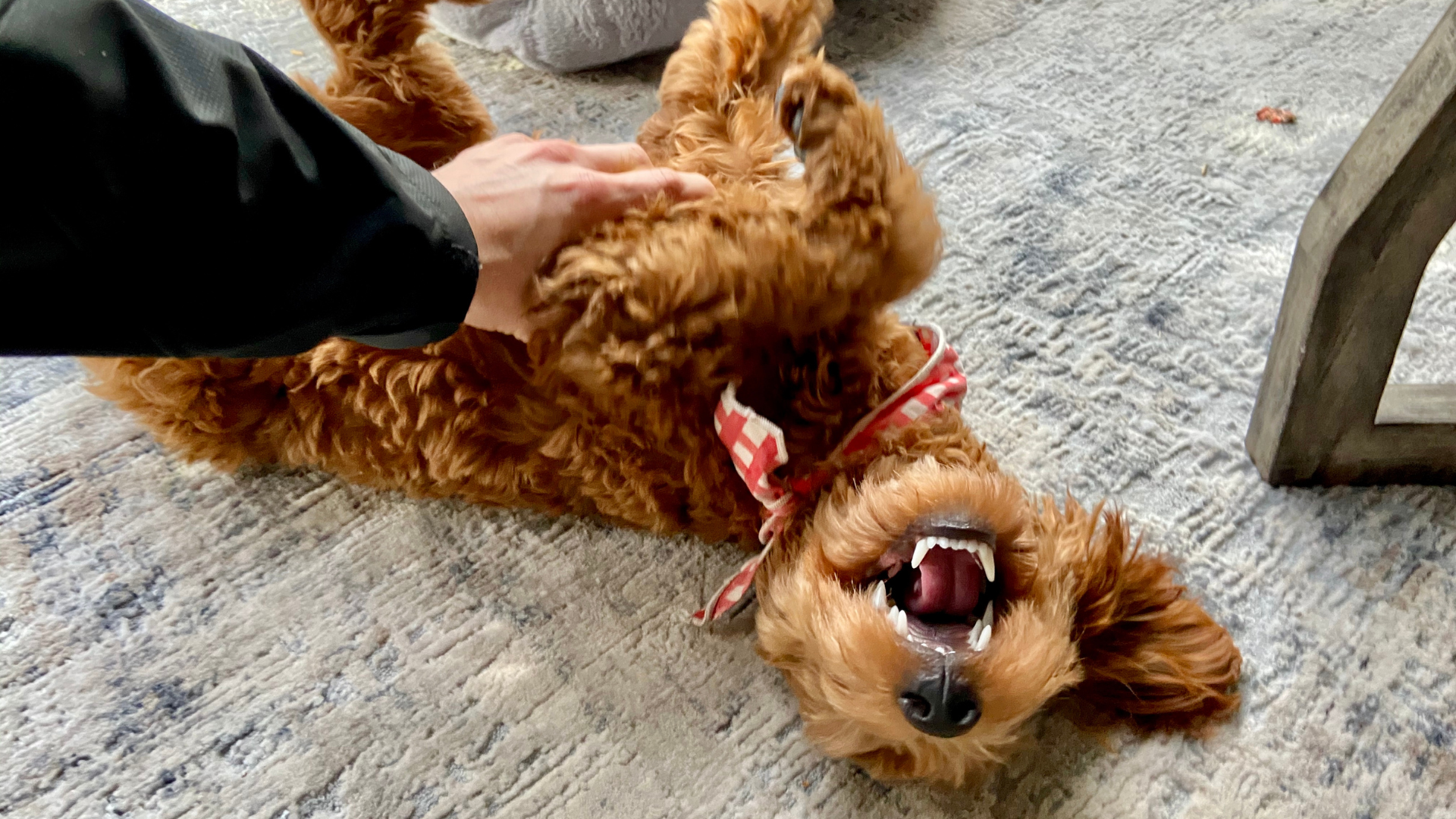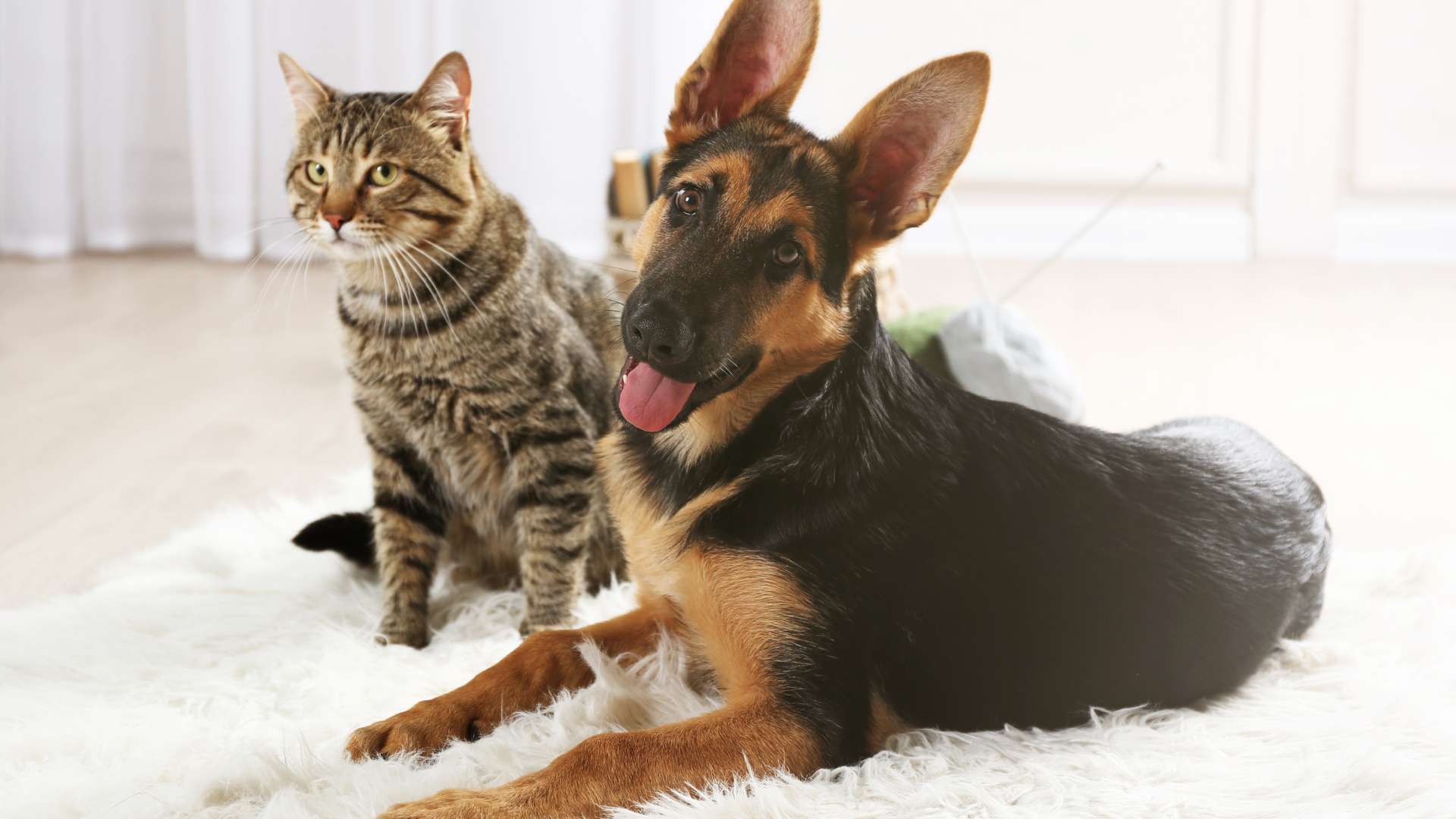Have you ever noticed your dog waiting by the door just as you pull into the driveway? Or getting excited exactly at mealtime even though they can’t read a clock? These moments leave many pet parents wondering: do dogs have a concept of time?
While dogs can’t tell time the way humans do, growing scientific research shows they possess their own unique way of experiencing time. Understanding this can deepen your bond with your dog, help you create better routines, and even improve their emotional well-being. Let’s explore what science reveals about how dogs perceive time.
What Does It Mean to Have a Concept of Time
Before we can understand how dogs experience time, we need to clarify what having a “concept of time” actually means.
For humans, time is both chronological (hours, minutes, days) and psychological (our perception of time passing). We use tools like clocks and calendars to measure it, but we also feel time—like how an hour flies by when we’re having fun or drags when we’re bored.
Dogs, on the other hand, don’t understand time as numbers. Their sense of time is based on patterns, memory, and sensory changes in their environment. They might not know what “2 p.m.” means, but they do know that the sun is lower in the sky and that means their favorite human is coming home soon.
How Dogs Perceive Time According to Science
Research into canine cognition shows that dogs rely on biological and environmental rhythms to estimate time. One of the strongest pieces of evidence involves their Circadian rhythm — the internal 24-hour biological clock that regulates sleep, activity, and hunger cycles.
Just like humans, dogs wake, rest, and get hungry around the same times each day because their bodies are synchronized with light-dark cycles. This rhythm gives them a basic framework for understanding the passing of days.
Dogs are also capable of what scientists call interval timing. This means they can perceive how long it has been since an event happened. Studies have shown that dogs behave more excited when their owners return after longer absences, suggesting they have an internal sense of elapsed time.
Do Dogs Measure Time Like Humans Do
Even though dogs have ways to perceive time, they don’t measure it in hours or minutes. They lack the abstract understanding of “clock time” that humans have.
Instead, dogs rely heavily on environmental cues to anticipate events. For example:
-
They notice changes in sunlight or shadows to sense the time of day.
-
They recognize patterns of household sounds, like an alarm clock going off or car keys jingling.
-
They even detect the fading of scent as a marker of how long you’ve been away.
This means your dog isn’t watching the clock when waiting for you—they’re picking up on subtle environmental shifts that tell them your return is near.
Signs That Your Dog Has a Sense of Time
Although dogs don’t comprehend time like we do, their behavior reveals that they sense its passage in their own way. Here are common signs your dog has a sense of time:
Anticipating Routine Events: Dogs often show up by the door just before walk time or get restless around mealtime. This shows they’ve connected consistent timing with certain activities.
Separation Behaviors: Dogs may become anxious or vocal when left alone longer than usual, which suggests they recognize the difference between short and long absences.
Predicting Your Return: Many dogs wait by the door or window around the same time you usually come home. This shows they’ve built a mental association between daily patterns and your return.
Sleeping and Activity Cycles: Your dog may nap, wake, and play at roughly the same times each day, following their internal rhythm.
These behaviors don’t prove dogs “know the clock,” but they do show they experience time emotionally and behaviorally.
The Role of Memory in a Dog’s Concept of Time
Memory plays a major role in how dogs understand the passing of time. Dogs rely on associative memory rather than the detailed Episodic memory humans have.
Associative memory means they connect events with outcomes—like linking the sound of a food bag with being fed. Over time, they build patterns: food at this point in the day, walk at that point, bedtime after dark.
While dogs may not mentally replay past experiences the way humans can, their ability to remember consistent routines helps them anticipate when things will happen. This is a key reason they seem so “in tune” with schedules.
How Dogs’ Concept of Time Compares to Other Animals
Dogs aren’t the only animals with time perception, but their emotional connection to humans makes their relationship with time especially unique.
-
Cats are less schedule-dependent and can be more independent, often showing weaker responses to time gaps.
-
Horses and birds also have strong time-sense abilities, especially for training routines and navigation, but they don’t usually form the same attachment-based waiting behaviors that dogs do.
What sets dogs apart is their bond with their human family. They don’t just notice time passing—they emotionally care about how long they’ve been away from you. This emotional layer makes their experience of time especially meaningful.
Keeping the Home Clean While Studying Your Dog’s Behavior
Observing your dog’s behavior over time often means they’ll be spending long stretches indoors. Keeping their environment fresh and sanitary can help them feel calm and secure.
-
Use Carpet Deodorizers to remove lingering pet odors from their favorite resting spots and play areas.
-
Wash their blankets, toys, and bedding often with Laundry Powders to remove fur, dander, and odor buildup naturally.
-
Wipe down frequently touched surfaces with All-Purpose Cleaners that are safe for pets, helping reduce bacteria while protecting your dog’s health.
A clean environment reduces distractions and stress, helping you better observe your dog’s natural rhythms and behaviors related to time perception.
How a Dog’s Concept of Time Shapes Their Emotions
Time perception plays a direct role in your dog’s emotional well-being. When they sense long gaps between interactions, they may feel anxious or stressed, especially if they have a strong attachment to you.
Separation Anxiety: Many dogs become anxious when left alone, pacing, whining, or becoming destructive. This isn’t because they’re being “naughty”—it’s often because they emotionally register the time away as stressful.
Excitement During Reunions: Dogs show overwhelming joy when you return home, regardless of whether you’ve been gone for ten minutes or four hours. This reaction reflects how strongly they emotionally track the time spent apart.
Anticipatory Happiness: Some dogs get excited well before a walk or mealtime, showing they can emotionally anticipate events based on previous time patterns.
Recognizing that your dog’s emotions are tied to their internal sense of time can help you respond with patience and empathy.
Helping Your Dog Cope with Time Alone
If your dog struggles with being alone, you can gradually help them adjust by using routines and positive reinforcement to reshape their perception of time.
Establish Predictable Patterns: Dogs thrive on consistency. Try to leave and return at similar times each day to help them learn when to expect you.
Use Enrichment Toys: Provide treat puzzles or safe chew toys to occupy their minds and make waiting feel shorter.
Practice Short Departures: Start by leaving for just a few minutes and gradually extend the time away, helping your dog build confidence that you always return.
Leave Comforting Scents or Sounds: Leaving behind an item that smells like you or playing soft music can soothe your dog while you’re away.
By gently reshaping how your dog experiences time alone, you reduce the stress that often builds during absences.
How to Adjust Routines Based on Your Dog’s Time Perception
Because dogs rely on patterns, adjusting your daily routines to match their sense of time can improve their behavior and overall well-being.
Create a Reliable Schedule: Feed, walk, and play with your dog around the same times each day. Regularity helps them feel safe and know what to expect.
Match Activities to Natural Rhythms: Schedule energetic play during their most active times and encourage rest during their natural nap periods.
Account for Time Shifts Like Daylight Saving Time: Gradually shift feeding and walk times in small increments to help your dog adapt to seasonal time changes without stress.
Involve All Family Members: Consistency from every household member reinforces time-based routines and reduces confusion.
Small, thoughtful adjustments make a big difference in how smoothly your dog flows through the day.
What Happens When Time Patterns Change Suddenly
Dogs can become disoriented or stressed when their familiar time patterns are disrupted. This often happens when owners change work schedules, move homes, or travel frequently.
Signs of Stress from Routine Disruptions:
-
Loss of appetite
-
Excessive barking or whining
-
Destructive behavior
-
Clinginess or withdrawal
How to Help Them Adapt:
-
Gradually introduce the new routine a few minutes at a time.
-
Offer extra playtime or affection to build positive associations.
-
Use visual or scent cues (like opening curtains at the same time daily) to create new time anchors.
Being patient and consistent helps your dog rebuild their internal schedule and feel secure again.
Keeping Your Home Environment Comfortable While You’re Away
While you’re gone, your dog spends time alone navigating their environment, which can influence how they perceive the passing hours. Keeping that space clean, calm, and comforting can ease their stress.
-
Keep their resting areas odor-free with Carpet Deodorizers, which help eliminate lingering pet smells from rugs, dog beds, and play zones.
-
Wash their blankets, soft toys, and bedding regularly using Laundry Powders to remove fur, dander, and buildup naturally without harsh chemicals.
-
Wipe down frequently used surfaces, feeding stations, and play areas with pet-safe All-Purpose Cleaners to keep germs away while maintaining a safe environment.
A clean, fresh environment creates a sense of stability that helps your dog feel secure even when you’re not home.
How Understanding Time Perception Strengthens the Human-Dog Bond
When you start viewing the world from your dog’s perspective, your relationship naturally becomes deeper. Knowing they don’t think in hours or minutes—but feel time emotionally—helps you support them in ways they understand.
Consistency Builds Trust: Showing up at the same times for meals, walks, and cuddles reassures your dog that their world is predictable and safe.
Responsiveness Shows Care: Noticing when their emotional state changes during time disruptions shows your dog that you are attuned to their needs.
Shared Routines Build Connection: Engaging in regular daily activities together creates time-based rituals that strengthen your bond.
This deeper understanding turns everyday moments into opportunities for connection and trust.
Additional Resources on Pet Behavior and Care
Understanding your dog’s concept of time is just one part of caring for them holistically. As they grow and change, you’ll want to keep learning about their behavior, wellness, and happiness.
-
Visit the Good Natured Brand Blog for more expert-backed insights on dog behavior and pet wellness.
-
Explore the Good Natured Brand main page to find pet-safe, eco-friendly cleaning essentials that help maintain a stress-free home.
-
Consult your veterinarian or a certified dog behaviorist if your dog experiences persistent stress or anxiety related to routine changes.
Building a strong foundation of knowledge will help you create a supportive environment your dog can thrive in.
FAQs About Whether Dogs Have a Concept of Time
Do dogs know how long you’re gone?
Yes—while they don’t understand exact hours, studies show dogs respond differently depending on how long you’ve been away.
Can dogs tell time of day?
They can sense time of day through light changes, daily household patterns, and internal rhythms, even if they don’t understand clocks.
Why does my dog wait by the door at the same time every day?
They’ve learned your schedule through consistent patterns and environmental cues, allowing them to anticipate your return.
Do dogs get confused when time changes?
Yes, sudden shifts like altered feeding or walking schedules can stress them. Gradual adjustments help them adapt more easily.
Dogs and Their Concept of Time
Dogs may not grasp time in numbers, but they experience it emotionally and behaviorally in profound ways. Their ability to sense patterns, anticipate your return, and react to routine changes shows that time matters deeply in their world.
By honoring their natural rhythms, maintaining consistent routines, and keeping their environment clean and comforting, you help your dog feel secure no matter how many minutes—or hours—pass. Understanding their perspective on time isn’t just fascinating—it’s a powerful way to nurture their happiness and strengthen the bond you share.


















